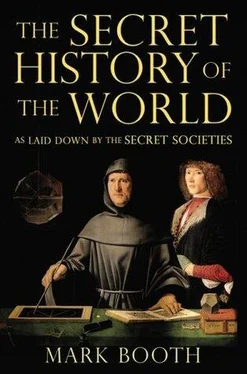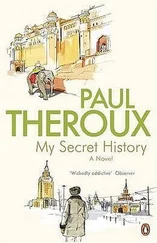All this is all the more astonishing because Boehme was almost completely uneducated. In some ways he is anticipated by Fludd in his interpretation of the Bible, which sees the story of the creation as a series of alchemical separations, but there is no evidence to suggest he ever read Fludd.
Born in 1575 to illiterate parents, Jacob Boehme was apprenticed to a cobbler. One day a stranger came into the shop, bought a pair of boots, then, as he was leaving, called Jacob by name, asking him to follow him into the street. Jacob was surprised this stranger knew his name, but more surprised when he fixed him with a penetrating stare and said: ‘Jacob, thou art yet but little, but the time will come when thou shalt be great and the world shall be moved at thee. Read the Holy Scriptures where thou wilt find comfort and instruction, for thou must endure much misery and poverty and suffer persecution. But be courageous and persevere, for God loves thee.’ The stranger turned and disappeared, and Boehme never saw him again. But the meeting had made a deep impression upon him.
He became much more serious in a way that some found disconcerting. When his master threw him out, he became a journeyman tradesman, working hard, and eventually he set up his own shop.
One day he was sitting in his kitchen when the sun shining on a pewter plate blinded him. For a while everything grew dim. Then gradually the table, his hands, the walls, everything became transparent. He realized that, although we usually think of the air as being transparent, it is actually quite cloudy. Because now he saw it become truly transparent, like a cloud clearing, and suddenly he saw whole new spirit worlds opening up before him in every direction. He saw that his whole body was transparent and realized that he was looking down on himself, that his centre of consciousness had floated free of his body and was able to move freely into the spirit worlds.
So it was that Jacob Boehme first journeyed through the spiritual hierarchies while still alive, as St Paul, Mohammed and Dante had done before him.
Boehme was generally physically unimpressive, short with a low forehead, but his remarkable blue eyes now began to shine with a special luminosity. People who met him were impressed by his ability to see into their past and their future. He was sometimes able to speak different languages from different parts of the world and different periods.
His second illumination took place while he was walking through fields. He suddenly felt he could experience directly the mystery of creation. Afterwards he wrote: ‘In one quarter of an hour I saw and knew more than if I had been at university for many years.’ What Boehme had experienced did not contradict his Lutheran, Bible-based beliefs, but it clarified and illumined them, opening up new dimensions of meaning.
What distinguishes Boehme’s writings, though, are his descriptions of these teachings in terms of urgent, personal experiences. He originally wrote his first work, Aurora , as an aide-mémoire to one of his mystical experiences, but when a local nobleman saw it, he had several copies made. One of these fell into the hands of the local pastor of Goelitz. Perhaps jealous of someone who obviously knew so much more than he did of the spirit worlds, the pastor began to persecute the cobbler. He accused him of heresy, threatening prison and finally driving him out of town under threat of being burned alive.
Shortly after his expulsion Boehme called his son, Tobias, to his bedside, asking if he could hear the beautiful music, and asking, too, if he would open the window so they could hear it better.
After a while he said ‘Now I go hence to Paradise’, gave a deep sigh and died.
In response to the question, Where does the spirit go after death?, Boehme had once answered in a way that has something of the Teutonic Zen of Eckhart: ‘It has no need to go anywhere. The spirit has heaven and hell within itself. Heaven and hell are within one another and are to one another as nothing.’
BOEHME AND THE PASTOR OF GOELITZ had looked at each other across the village green with mutual incomprehension. These were two very different forms of consciousness. On the other side of the world the disgust and intolerance that arises when two very different forms of consciousness encounter each other worked itself out on a much greater and more tragic scale.
Less idealistic men had followed in the wake of Christopher Columbus. In 1519 Hernando Cortés had been sailing along the Yucatan Gulf coast when he established a base he called Veracruz. He and his fellow Spaniards had heard rumours of the fabulous wealth of the Aztecs, but they were astonished when an ambassador from their ruler, Moctezuma, approached the base bearing gifts.
The gifts included a gold image of the sun as big as a cartwheel and an even larger silver representation of the moon. There was also a helmet overflowing with grains of gold and a great headdress made of feathers of the ‘quetzal’ bird.
The Aztec ambassador explained that these were the gifts his lord, Moctezuma, was giving to the great god Quetzal Coatl. This god, the ambassador further explained, had a long time previously quitted the earth to make the moon his home.
The Conquistadors then realized that Cortés, bearded, helmeted and fair-skinned, must resemble the prophetic depictions of Quetzal Coatl. By coincidence, as they saw it, they had arrived at precisely the time that the Aztec astrologers prophesied that this god would return.
Some of the wonderfully intricate and delicate Aztec objects would be shipped back to Europe, where Albrecht Dürer saw them. He said that they were so subtle, so ingenious, they made his heart sing. But the followers of Cortés entertained other, less elevated thoughts. When they arrived at the Aztec capital Tenochtitlan (now Mexico City) they discovered it lay in the middle of a great lake, accessible only by narrow artificial bridges that could easily be defended. But Moctezuma came out to greet them, bowed before the godly Cortés and invited them to enter. Cortés’s plan had been to kidnap Moctezuma and make off with the ransom, but when his men saw all the gold that lay about the palace, they impatiently killed the king. Because of this stupidity they were able to escape only after a long battle. This was the beginning of one of the bloodiest episodes in history.
The Conquistadors heard rumours of a secret source of all the gold and of a gilded king, El Dorado, who bathed in liquid gold every morning. Walter Raleigh, who would join in the quest for this fabled king’s city was writing of ‘Imperial El Dorado, roofed with gold’.
Cortés’s rival, Francisco Pizarro, sailed to Peru, intending to rob an entire country protected by tens of thousands, and to do it with an army of only two hundred.
Like Cortés he kidnapped the king, after offering to meet him unarmed. As a ransom he demanded that a room be filled to the ceiling with gold. For weeks a procession of natives brought plates, goblets and other finely wrought artefacts, but when the room was nearly full the Spaniards claimed that the deal had been to fill the room with gold ingots. They began melting down the artefacts to create more space to fill.
Eventually, as had happened with Cortés, Pizarro’s men grew impatient and killed the king. Open hostilities broke out. When Pizarro’s small army pushed its way into the capital they found palaces with golden walls, golden furniture, statues of gods and animals and golden armour. There was even an artificial garden in which the trees, flowers and animals were made of gold and a field three hundred by six hundred feet in which every stalk of maize was made of silver and its ears of gold.
It is estimated that some 100,000 Aztecs were killed at the battle for Tenochtitlan, with a loss of only a handful of Conquistadors. It has also been estimated that in the course of the Conquest some two million natives died.
Читать дальше












